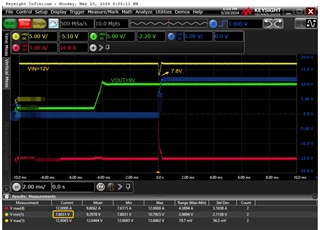Hi,
From datasheet, we know that "Each time the LDO switch is enabled on the rising edge of the EN pin or during the exiting of the thermal shutdown, the short-to-battery detection occurs. At this moment, if the device detects the short-to-battery fault, the LDO switch is latched off"

We want to the the time between ‘EN’ pulled high and the short-to-battery detection. Because when we pull EN high and pull VIN low, VOUT still keeps on. Does it mean detection circuit is not ready?




